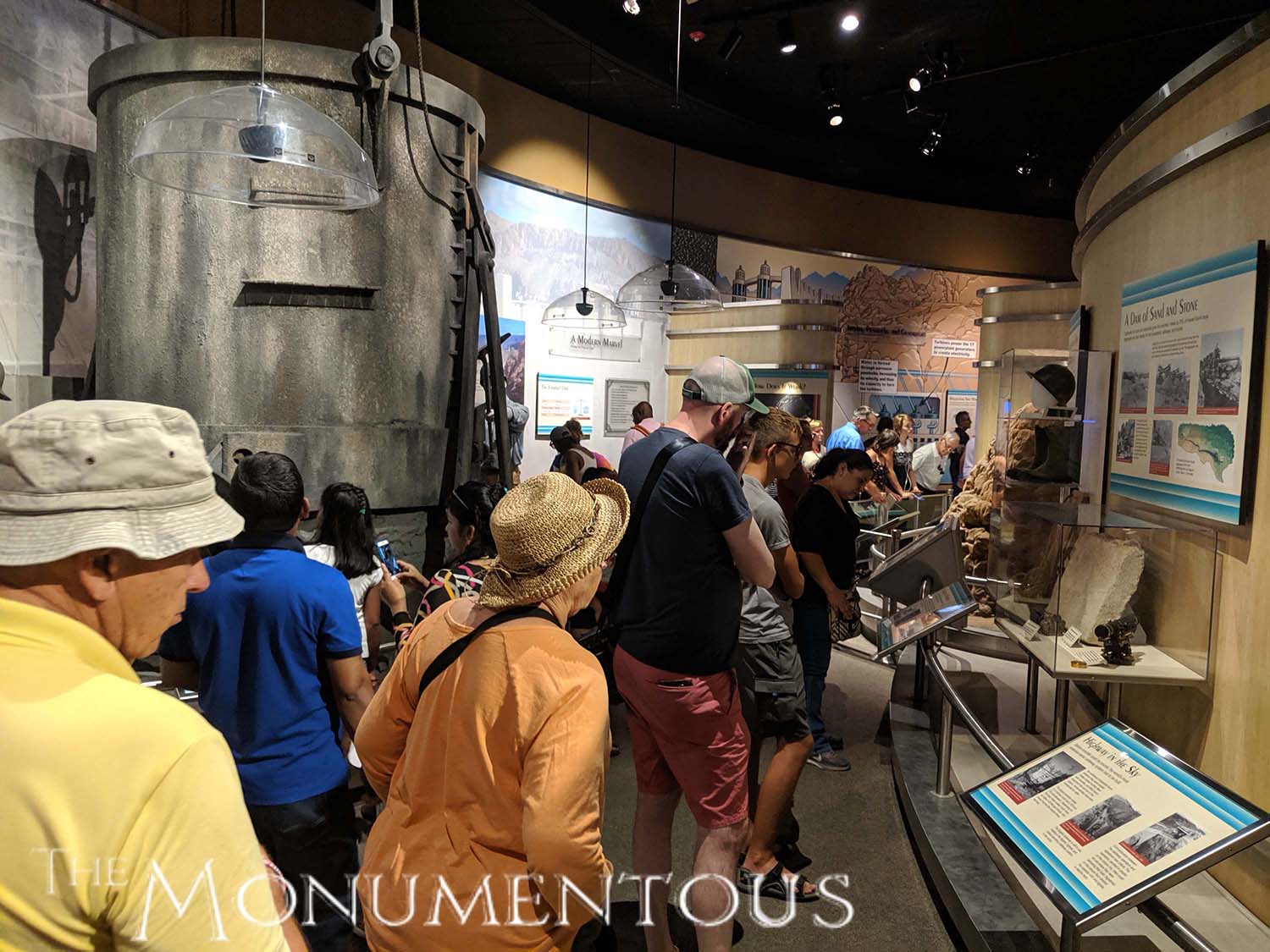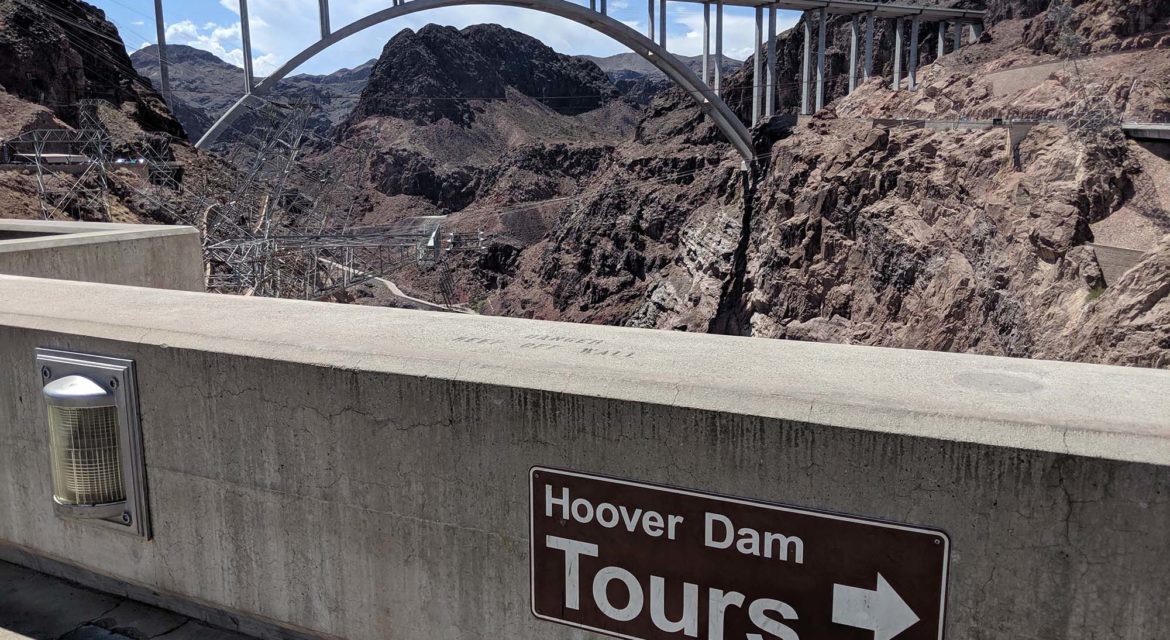 The Hoover Dam is a 700-hundred-foot-tall, concrete arch-gravity dam located directly on the border between Arizona and Nevada. Considered to be a modern marvel of the world that provides power for public and private utilities in Nevada, Arizona, and California, the Hoover Dam is also a major tourist attraction. Nearly a million people tour the dam each year on account of the experiences that have been created for those visitors.
The Hoover Dam is a 700-hundred-foot-tall, concrete arch-gravity dam located directly on the border between Arizona and Nevada. Considered to be a modern marvel of the world that provides power for public and private utilities in Nevada, Arizona, and California, the Hoover Dam is also a major tourist attraction. Nearly a million people tour the dam each year on account of the experiences that have been created for those visitors.

Powering the Region with an Art Deco Design
 Constructed between 1931 and 1936, the Hoover Dam was completed in its entirety two years ahead of schedule. That was the result of 10,000-20,000 workers coming into Boulder City, Nevada to work in some of the most extreme work conditions imaginable with temperatures soaring well above 100 degrees on an average day. It has become a testimony to people’s ability to construct monolithic projects in the midst of adverse conditions.
Constructed between 1931 and 1936, the Hoover Dam was completed in its entirety two years ahead of schedule. That was the result of 10,000-20,000 workers coming into Boulder City, Nevada to work in some of the most extreme work conditions imaginable with temperatures soaring well above 100 degrees on an average day. It has become a testimony to people’s ability to construct monolithic projects in the midst of adverse conditions.
While the Hoover Dam was ultimately created to provide power to the region, that it could and would function as an attraction is something engineers considered from the very beginning. It’s why they brought in architect Gordon B. Kaufmann to install an Art Deco style to the entire project. He designed sculpted turrets rising seamlessly from the dam face and clock faces on the intake towers set for the time in both Nevada and Arizona.
Denver artist Allen Tupper True was hired to handle the design and decoration of the walls and floors. His design for the pipes and terrazzo flooring on the interior of Hoover Dam continue to drawn attention and interest from visitors and the art world.
Sculptor Oskar J.W. Hansen designed many of the sculptures on and around the dam, including the “Winged Figures of the Republic”. The figures are sentries at the entrance to Hoover Dam and are part angel, part symbol of the strength of man. Hansen’s design included a 14-story flagpole, installed between the figures and anchored deep into the bedrock below. On the ground in front of the sculptures, Hansen added a dramatic terrazzo floor of his own Art Deco design. His “star map” was aligned exactly to the placement of the Nevada skies on the very day President Franklin Roosevelt was to dedicate the dam.
Hoover Dam opened for tours in 1937 after its completion. In 1995, a new visitors’ center was built, and the following year, visits exceeded one million for the first time. The monument’s focus on audience experiences is just part of the reason it has been able to attract so many people from across the world.

Experiences Inside and Around the Hoover Dam
 That the Hoover Dam would someday become a major tourist attraction was something the engineers considered and it compelled them to make the experiences that visitors could have a top priority. While the Art Deco design and well as individual monuments continue to draw attention, these expereinces drive more attention than anything else.
That the Hoover Dam would someday become a major tourist attraction was something the engineers considered and it compelled them to make the experiences that visitors could have a top priority. While the Art Deco design and well as individual monuments continue to draw attention, these expereinces drive more attention than anything else.
The Hoover Dam Tour includes a 1-hour guided tour of the power plant and passageways within the dam itself, while the Power plant Tour is a 30-minute guided tour of the power plant only. Both tours include admission to the Visitor Center.
The Bureau of Reclamation maintains a collection of museum items, historic photographs, and news clippings related to Hoover Dam. The “Hoover Dam Collection” includes more than 5,000 items associated with the heritage of the dam, the Boulder City area, and Reclamation. Such artifacts include badges, brochures, electrical instruments, clothing, artwork, newspaper and magazine clippings, and more. The collection also contains approximately 20,000 photographs and about 2,000 slides.
The Hoover Dam can also be experienced from the nearby Mike O’Callaghan-Pat Tillman Memorial Bridge. As the world’s tallest concrete arch bridge, it is the first concrete-steel arch composite bridge in the United States and towers 880 feet over the Hoover Dam. The 1,905-foot-long man-made bridge connects both Nevada and Arizona roadways and provides great photo opportunities of the Hoover Dam and Black Canyon below.
These experiences are part of the reason the Hoover Dam has had such a notable impact on the culture and economy of the region.

“The Dam that Shaped the Southwest”
 The costs associated with a 30-minute guided Powerplant tour as well as the hour-long Hoover Dam Tour can vary depending on the circumstances of the visitor, but nonetheless represents a powerful source of direct revenue for the Hoover Dam. While visitors can see attractions like the “Winged Figures of the Republic” at no cost, parking fees at the facility will still apply.
The costs associated with a 30-minute guided Powerplant tour as well as the hour-long Hoover Dam Tour can vary depending on the circumstances of the visitor, but nonetheless represents a powerful source of direct revenue for the Hoover Dam. While visitors can see attractions like the “Winged Figures of the Republic” at no cost, parking fees at the facility will still apply.
There are a plethora of items available for purchase at the Hoover Dam gift shop that incorporates the icon of the dam in every conceivable manner, but shops across the region contain similar options. The notoriety of the Hoover Dam has fueled a cottage industry of shops and stores that have been able to survive and thrive thanks to the popularity of the monument.
The Hoover Dam has also been able to convey a strong sense of identity to the surrounding area, to the point that it’s been incorporated into monuments that are exclusive to places like Boulder City. Pieces like “Puddler’s Break” depict and represent two of the workers whose job it was to make sure there were no air bubbles or debris in the concrete of the Hoover Dam as it formed. This representation conveys the significance of the monument on the city.
Listed on the National Register of Historic Places in 1981 and designated a National Historic Landmark in 1985, Hoover Dam has been recognized for its engineering innovations. However, this recognition is just part of the legacy is represents for the entire region.

The Legacy of a Modern Marvel
 There are countless engineering feats are worthy of attention, but few have been able to attract audiences like the Hoover Dam. The activity it generates has had a profound impact on the culture and economy of the entire Southwest, showcasing how the legacy of a modern marvel can be about so much more than the structure itself.
There are countless engineering feats are worthy of attention, but few have been able to attract audiences like the Hoover Dam. The activity it generates has had a profound impact on the culture and economy of the entire Southwest, showcasing how the legacy of a modern marvel can be about so much more than the structure itself.

